52 Weeks of Fantastic Bindings: Week 24
Thorlak’s Bible, the second edition of the Bible in Icelandic, bound in contemporary leather with beautiful clasps and endpapers
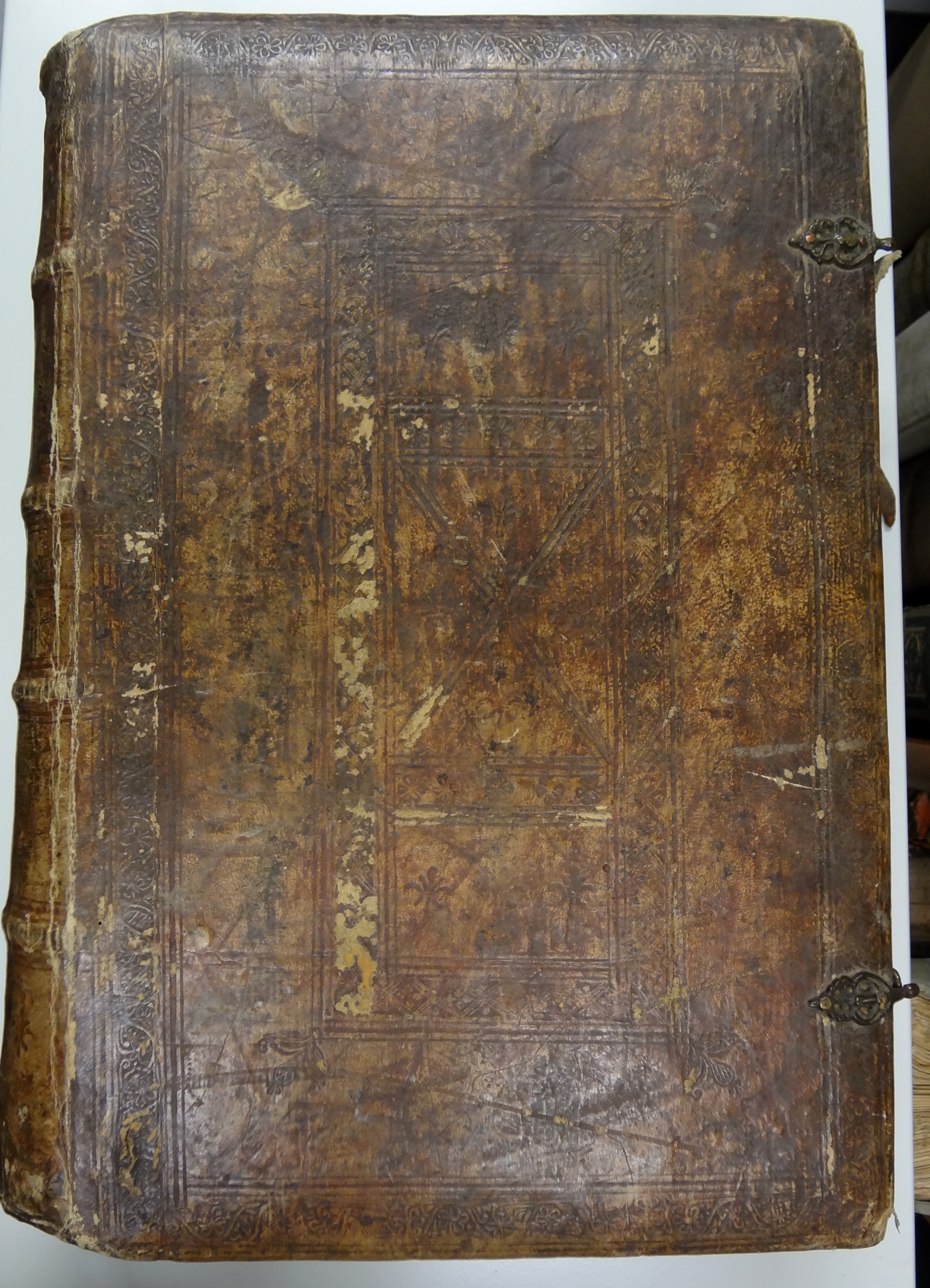
I stumbled across this fascinating book while I was photographing the library’s copy of the first edition of the King James Bible (Bib BS185.C11) for a previous announcement. St Andrews copy at Bib BS248.C44, better known as “Thorlak’s Bible”, caught my eye as I was reshelving the King James Bible because the colour of the binding and the tooling on the spine didn’t quite match up with anything else I had ever seen. Sure enough, when I pulled this item off the shelf I was in for a surprise …
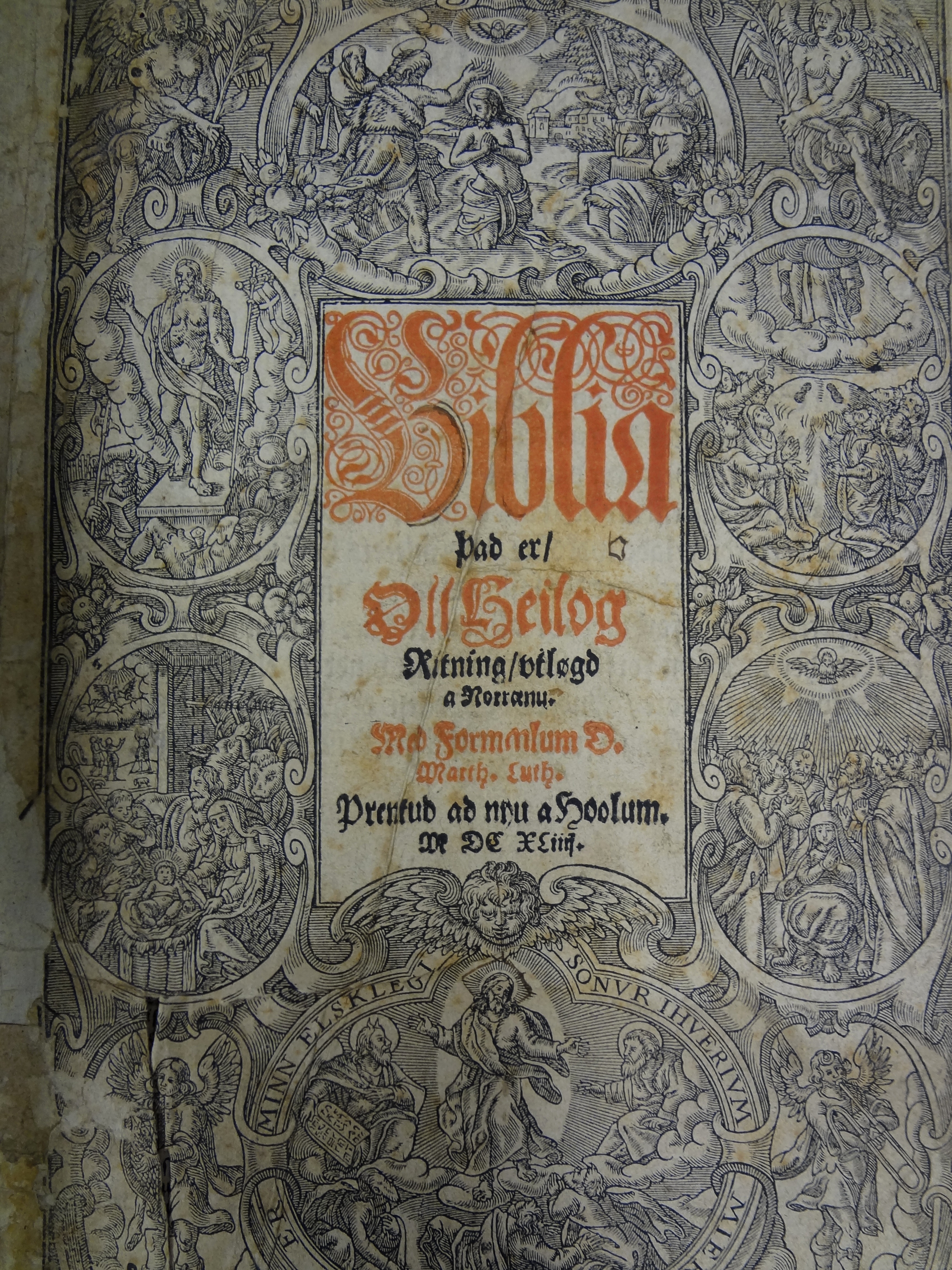
Because the majority of the Bible Collection is still uncatalogued, most of the items are relatively unknown. This book turned out to be a copy of “Thorlak’s Bible”, or, the second edition of the Bible to be printed in Icelandic (1644). This bible was a revision of Guðbrandur Þorláksson’s 1584 Icelandic Bible prepared by his grandson Þorlákur Skúlason [Thorlak Skúlason], Bishop of Hólar, assisted by S. Jónsson, based on the Danish Resen version and with reference to Martin Luther’s German Bible. In most particulars this Bible closely resembles the 1584 edition, but verse numbering is here introduced. This edition, consisting of 1,000 copies, was known as “Þorláks Biblia”, “Þorláksbiblía,” or “Thorlak’s Bible.” A quick check on WorldCat and COPAC confirms that this is one of 5 copies confirmed in libraries in the U.K., the only other Scottish institution to own a copy is Glasgow.
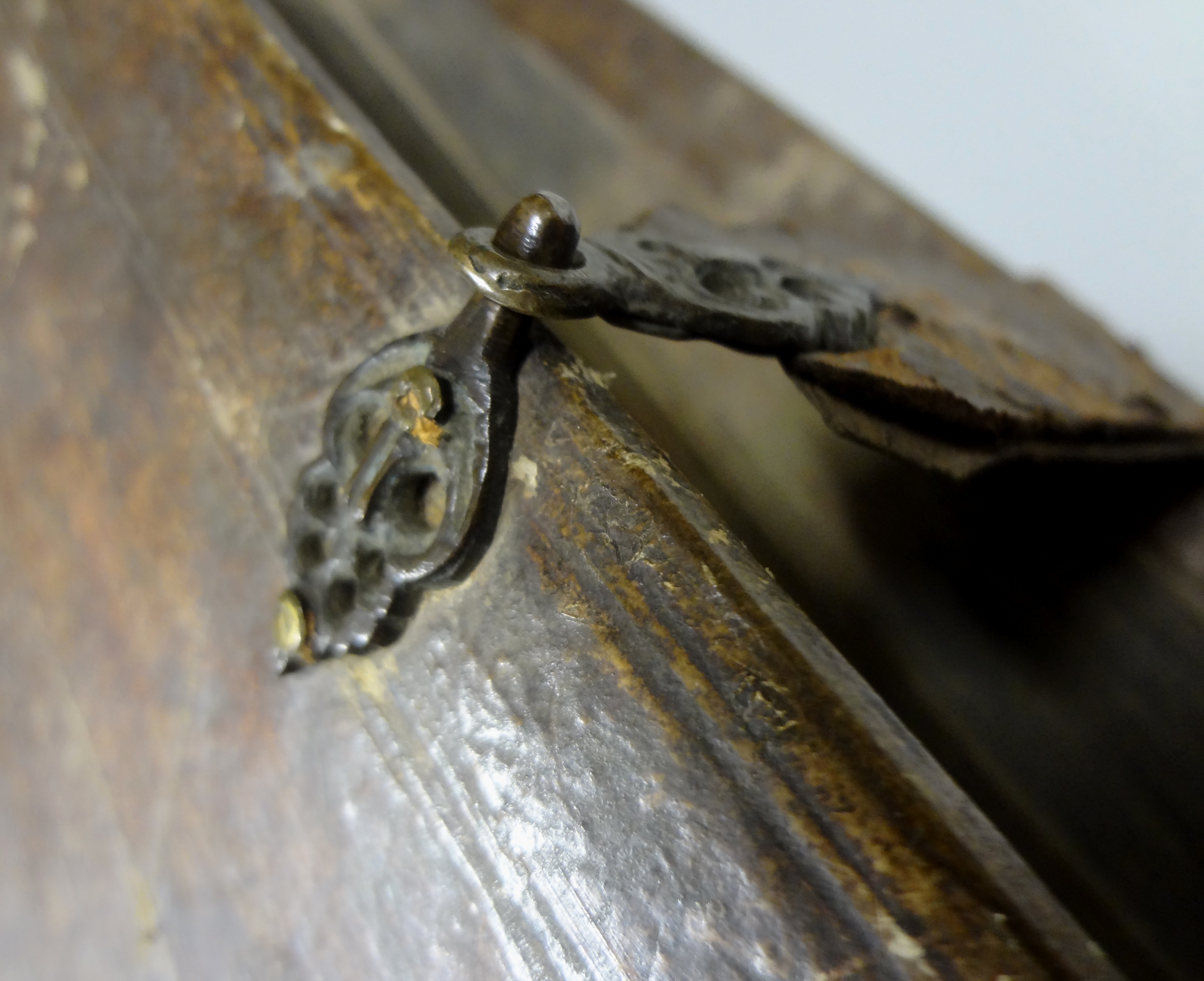
Even more unique is the fact that this book is bound in contemporary leather (I can’t quite identify the animal skin, as the treatment applied to it is very heavy, but it feels like pigskin), on heavy pine boards. Both covers are decorated with 17th century blind-roll stamps that were common place on 16th century European books. Both of the contemporary clasp plates remain, and one clasp and clasp band; these clasps are designed in a loop-and-ball fashion, which I haven’t seen on other books.
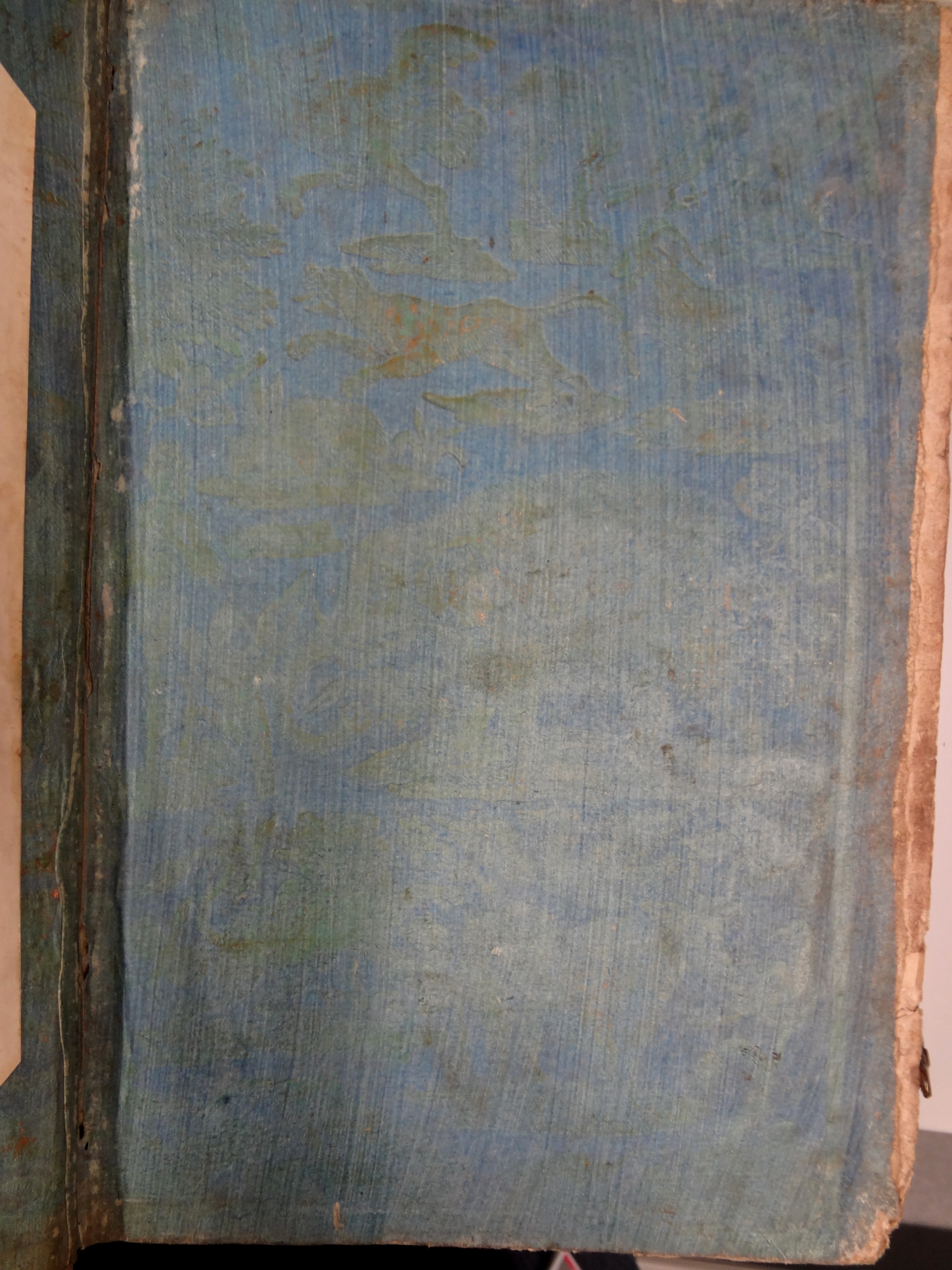
This book’s surprises only begin with the covers, opening it up you are treated to some very strange and beautiful endpapers. The front endpapers are dark blue and have been decorated with illustrations of animals that were once stamped in gilt, and the back endpapers are a similar shade of blue decorated paper. Turning to the actual text, the heavily illustrated and engraved title page is something that you would, again, expect out of a 16th century European book, as well as the woodblock engravings. The printed initials used throughout are unique and beautiful, and are reminiscent of Celtic design.
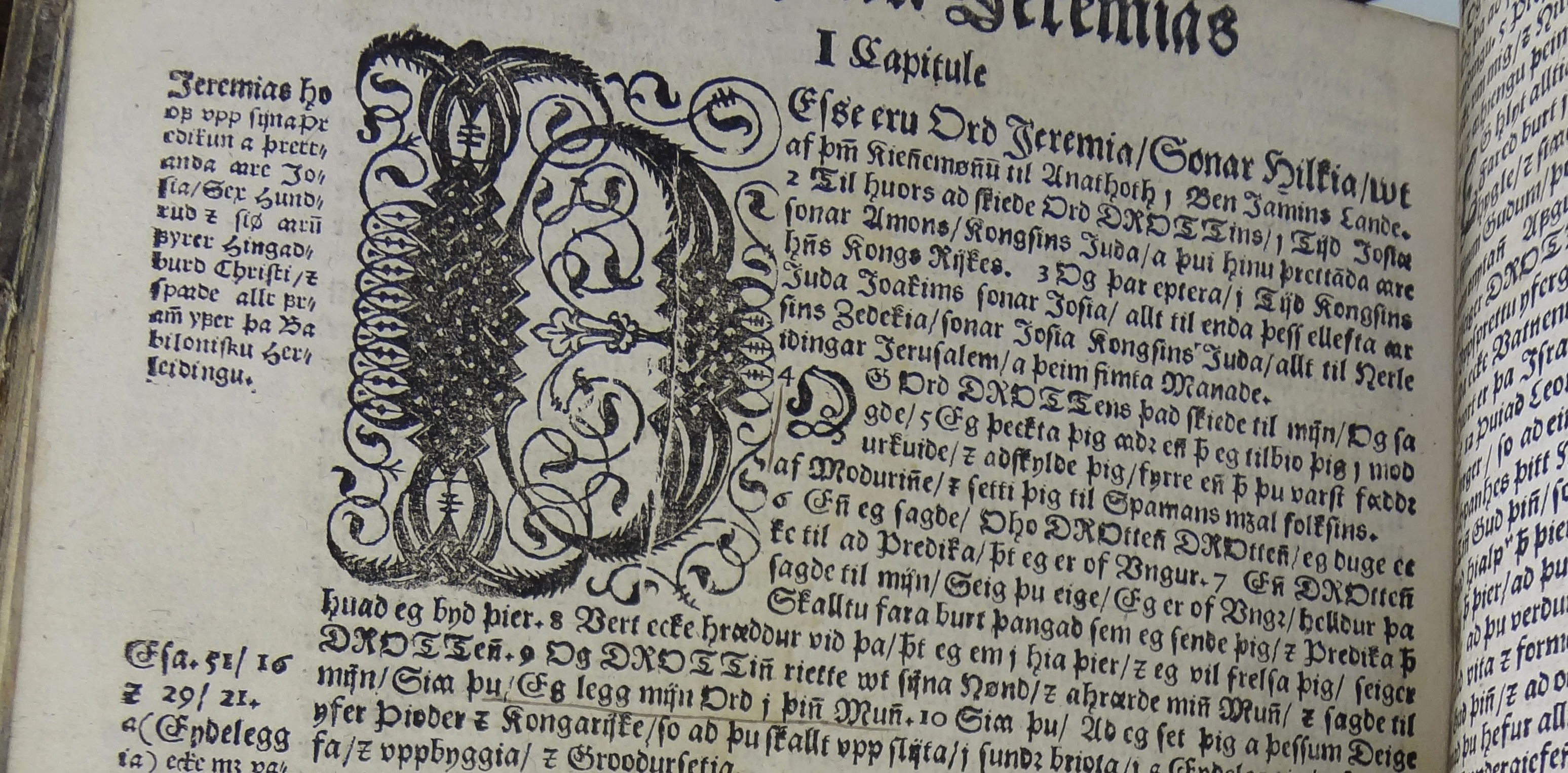
There is a full-page ownership illustration inserted at the front of the bible, with the initials “B.B.S” and dated “1821”. This book was donated to the library in the 19th century by Dr. William Lauder Lindsay, who travelled to Iceland in the late 1860’s.
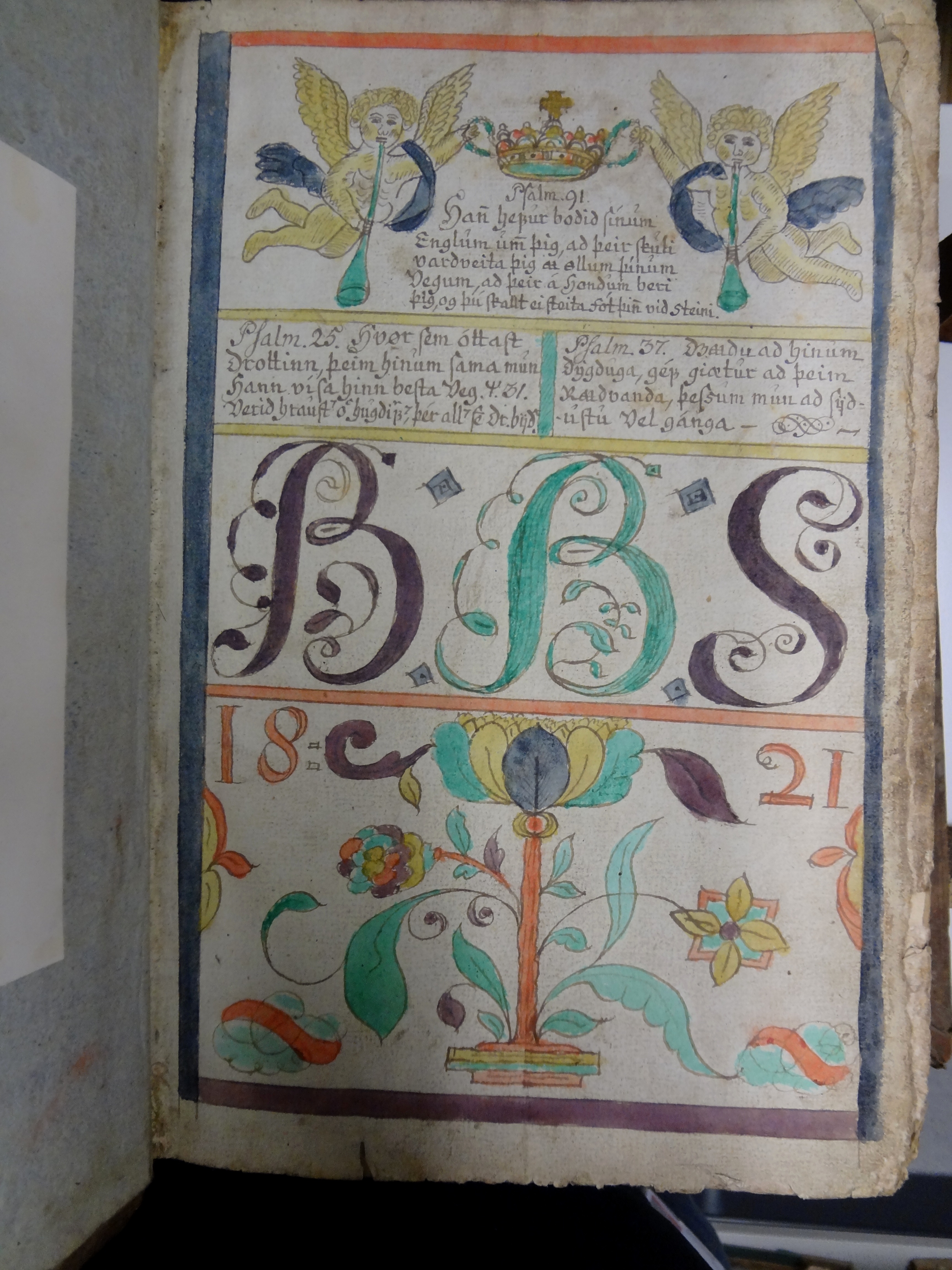
This item is a prime candidate for some further research, especially for someone with Icelandic!
–DG
Hi Daryl, Remind me to ask one of our palaeography MLitt students who has Icelandic whether he might be interested in looking at this with you. What an interesting find!
It was lovely to see the images of the Icelandic Bible. I was well aware of it from my work on a biographical monograph and bibliography of the works of William Lauder Lindsay. He must have obtained it during his trip to Iceland in the northern summer of 1860. Lindsay wrote a piece on the history of the Icelandic Bible for the "Perthshire Constitutional" of 21 May 1877. I would be most interested to know how and when the Bible came into your possession. Lindsay retired from the Murray Royal Hospital, Perth, to Edinburgh in 1879 and died in 1880. Did he donate it to St Andrews then? Discovery of any correspondence might throw light on the disposition of his papers and library after his death. Most appreciate of any information you can provide.
The Bible was presented to the University by Dr Lindsay, in the session 1877-78. There is an entry in our list of donors (UYLY355, 1869-1886) between May and July of 1878, noting the donation, but not giving a precise date (it refers to the catalogue for 1877-78 as the date reference). I hope this information helps. Wishing you the best of luck with your research!
Thank you for that information. That is certainly his handwriting on the interesting printed bookplate. Another little piece of the jigsaw in place! The donation in 1877-78 fits my understanding of Lindsay during the "wind down" phase of his career.